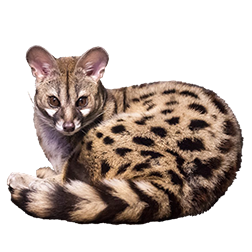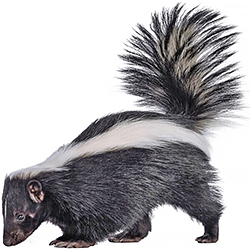The Ultimate Guide to Exotic Pets
Exotic Pets 101: Everything You Need to Know Before Buying
1. Introduction to Exotic Pet Ownership
What Qualifies as an Exotic Pet?
Owning an exotic pet means venturing beyond the realm of cats and dogs into a world filled with fascinating creatures that are as unique as their owners. Exotic pets include animals that are uncommon, often requiring specialized care, and may hail from wild or non-domestic backgrounds. Think marsupials, primates, or even porcupines—each offering a distinctive companionship experience.
These aren’t your average backyard critters. Exotic pets are the head-turners of the animal world, the ones that make your friends go, “Wait…you have what?”
Why Own an Exotic Pet?
Owning an exotic pet is a lifestyle choice that combines passion with patience. Here are some reasons why people are drawn to these extraordinary companions
- Unique Personalities: Exotic pets like ferrets, hedgehogs, and raccoons are bursting with character. They’re playful, curious, and full of surprises.
- A Learning Experience: Caring for an exotic pet is a deep dive into understanding the needs and behaviors of species you’d otherwise never encounter up close.
- A Break from the Ordinary: Let’s be honest, owning a Fennec fox or a sugar glider is infinitely cooler than yet another Labrador Retriever (no offense, Labs).
- Building Bonds: The trust and connection you can develop with exotic pets—such as skunks or genets—can be incredibly rewarding.
The Challenges (and Rewards) of Exotic Pet Ownership
While owning an exotic pet can be fulfilling, it’s not without its hurdles
- Specialized Care: These animals often have very specific needs, from temperature-controlled habitats to highly curated diets.
- Legal Restrictions: State laws vary, and not all exotic pets are legal everywhere. Always research ownership laws in your state before falling in love with a fluffy face.
- Ethical Considerations: Responsible ownership means understanding where your pet comes from and ensuring its health and happiness.
Despite these challenges, the rewards are immense. You’ll not only gain a unique companion but also a sense of accomplishment from providing a happy home for an extraordinary creature.
Quiz: What’s Your Ideal Exotic Pet?
Before diving into the details, take a moment to reflect: What exotic pet best suits your personality and lifestyle?
- Do you love high-energy animals that keep you on your toes? You might love a ferret or a playful skunk.
- Looking for something more relaxed and low-maintenance? A hedgehog might be your match.
- Need a highly interactive pet that thrives on attention? A primate could be your ideal companion—if you’re ready for the responsibility!
Humorous Take: Why Choose an Exotic Pet?
- “Ever wanted a pet that looks at you like you owe it money? Meet the exotic pets of your dreams!”
- “Goldfish are great…until you meet a Genet that climbs curtains like a ninja.”
- “Because sometimes a dog just doesn’t cut it when you’re aiming to impress at dinner parties.”
The world of exotic pets is as exciting as it is diverse. This guide will introduce you to the incredible variety of species you can welcome into your home, while providing essential tips to ensure their care and happiness. Let’s dive into the next section, where we’ll explore the most popular exotic pets among enthusiasts and why they make such compelling companions.
2. Choosing the Right Exotic Pet
Factors to Consider When Selecting an Exotic Pet
Choosing an exotic pet is more than just picking the cutest or most Instagram-worthy creature—it’s about finding a companion that fits your lifestyle, resources, and preferences. Here’s what to think about before bringing home your exotic friend
- Lifestyle Compatibility
Do you have a busy schedule? Consider low-maintenance pets like hedgehogs or genets. Are you home often and ready for high-energy interaction? A playful ferret or a primate might suit you better.
Pro Tip: Some pets, like sugar gliders, are nocturnal. If you’re not a night owl, that could mean sleepless nights. - Budget
Exotic pets can come with surprising costs, from specialized diets to temperature-controlled habitats. Before adopting a Fennec fox, know you’re also adopting its appetite for premium meals.
Hidden Costs to Consider- Initial purchase or adoption fees.
- Vet bills (exotic veterinarians aren’t cheap).
- Enclosure setup, including lighting, heating, and enrichment.
- Ongoing feeding and grooming expenses.
- Space Requirements
Exotic pets have unique housing needs. A raccoon needs room to roam, while a hedgehog is perfectly content in a cozy enclosure.
Best Exotic Pets for Small Spaces: Hedgehogs, genets, and certain ferrets thrive in apartments or smaller homes. - Allergies and Sensitivities
If you or someone in your household has allergies, some exotic pets—like reptiles or certain marsupials—might be better options than fur-covered friends.
Exotic Pets for Specific Lifestyles
- For Small Spaces
- Hedgehogs: Quiet, adorable, and low-maintenance.
- Genets: Sleek and solitary, with minimal space requirements.
- For Families
- Ferrets: Playful and great with kids (supervised interactions recommended).
- Skunks: De-scented skunks are affectionate and surprisingly sociable.
- For Retirees
- Sugar Gliders: Gentle and loving, ideal for someone who has time for bonding.
- Foxes (e.g., Fennec or Arctic): Curious but manageable for those who enjoy daily enrichment activities.
- For Outdoor Enthusiasts
- Raccoons: Adventurous and perfect for larger properties.
- Porcupines: If you’ve got room and patience, these quirky creatures will keep you entertained.
Best Exotic Pets for Beginners
Starting with an exotic pet for the first time? Here are some beginner-friendly species that won’t leave you overwhelmed
- Hedgehogs: Cute, quiet, and easy to care for, hedgehogs make excellent starter pets.
- Ferrets: Energetic but manageable with the right enclosure and toys.
- Skunks: De-scented skunks are surprisingly cuddly and bond well with their owners.
- Genets: These independent, cat-like creatures require minimal interaction, making them perfect for first-time exotic pet owners.
Humor: Picking the Right Exotic Pet
- “Don’t pick a pet that could eat you—or your wallet—for dinner.”
- “A primate may seem cool—until it starts decorating your walls with bananas.”
- “Live insects daily? If that’s a dealbreaker, the hedgehog might just be your speed.”
Pro Tips for First-Time Exotic Pet Owners
- Start Small
If you’ve never cared for an exotic pet, ease into the experience. A boa constrictor or primate may sound thrilling, but their care demands can be overwhelming. - Research Care Requirements
Learn what your chosen pet needs before committing. For example, sugar gliders need a bonding pouch and a high-protein diet, while a raccoon thrives with plenty of outdoor enrichment. - Ask Questions
Talk to breeders or exotic pet owners to understand the reality of day-to-day care. Is the animal loud? Messy? Expensive? Forewarned is forearmed.
Engagement Idea: Exotic Pet Dealbreakers
Thinking about bringing home an exotic pet? Look out for these humorous “red flags” that may suggest a certain species isn’t for you
- “Requires live insects daily” (If you’re squeamish, maybe not the best match.)
- “Known for chewing through furniture” (Looking at you, raccoons.)
- “Nocturnal and screams at 2 a.m.” (Sugar gliders are adorable, but they’ll keep you on your toes.)
- “Loves to climb…everything” (Genets will explore places you didn’t even know existed.)
Choosing the right exotic pet is a journey that requires thoughtful consideration. With the right match, you’ll find a companion that brings joy, curiosity, and an extra dose of adventure into your life. Next up, let’s dive deeper into the care and habitat needs of these fascinating animals.
3. Legal and Ethical Considerations
Understanding the Rules: Exotic Pet Ownership Laws by State
Exotic pet ownership isn’t just about choosing the right companion—it’s also about navigating a complex web of laws and regulations. In the U.S., these laws vary significantly from state to state, so understanding what’s allowed (and what isn’t) is crucial before bringing an exotic pet home.
Exotic Pet Ownership Laws by State
Some states have liberal policies, while others have strict bans or require special permits. Here’s a general overview
- States with Strict Bans
States like California, Hawaii, and New York have some of the strictest laws, prohibiting ownership of many exotic animals, including primates, foxes, and raccoons.
Fun Fact: Hawaii’s strict laws are aimed at protecting its delicate ecosystem from invasive species. - States Allowing Certain Exotic Pets with Permits
States like Florida, Texas, and Nevada allow ownership of specific exotic pets but require permits and inspections.
Example: Florida allows Fennec foxes with a Class III Wildlife License but bans other fox species. - States with Lax Laws
States like Wisconsin, North Carolina, and Alabama have few restrictions, making them havens for exotic pet enthusiasts. However, local ordinances may impose additional rules.
Permits, Licenses, and Restrictions
Here’s what you might need to legally own an exotic pet
- Exotic Animal Permits: Required for species like foxes, primates, and raccoons in many states.
- Health Certifications: Some states mandate veterinary inspections to ensure your pet is disease-free.
- Zoning Laws: Check local regulations to confirm whether exotic pets are allowed in your area.
- Prohibited Species Lists: Some animals, such as large cats or venomous snakes, are outright banned in most states.
Pro Tip: Research local laws before you buy. Trust us, the fine print matters. Nothing ruins the excitement of a new pet like finding out they’re illegal in your area.
Ethical Concerns: Breeding and Sourcing Exotic Pets Responsibly
Owning an exotic pet comes with a moral responsibility. Here’s what every prospective owner should know
- Choose Ethical Breeders: Ensure your pet comes from a licensed, reputable breeder who prioritizes the health and well-being of their animals.
- Avoid backyard breeders and illegal wildlife traders.
- Look for breeders who provide proper health records and prioritize animal welfare.
- Avoid Wild-Caught Animals: Capturing wild animals for the pet trade is not only unethical but often illegal. Wild-caught pets may suffer from stress, poor health, and difficulty adapting to captivity.
- Consider Conservation: Some species may be endangered or threatened. Responsible ownership means understanding the impact your pet may have on its species and the ecosystem.
Humor: Legal and Ethical Mishaps
- “Spoiler alert: Owning a tiger without a permit is illegal. Sorry, ‘Tiger King’ fans.”
- “Raccoons are adorable, but letting one run loose in a Wisconsin suburb? Not so much.”
- “If your dream pet comes with a disclaimer that says ‘may require chainmail gloves,’ it’s worth a second thought.”
Pro Tips for Navigating Legalities
- Research, Research, Research: Local laws, state regulations, and federal rules can all impact exotic pet ownership.
- Ask for Help: Consult with breeders, veterinarians, or legal experts if you’re unsure about the rules.
- Stay Updated: Laws can change, so periodically check for updates to ensure continued compliance.
Engagement Idea: Wild or Wonderful? Legal vs. Illegal Exotic Pets
Here’s a fun comparison to help readers understand what’s allowed and what’s not
|
Animal |
Legal (Where) |
Illegal (Where) |
Fun Fact |
|
Fennec Fox |
Legal with permits (Florida, Texas) |
Illegal in California |
Smallest fox species, with ears that cool them! |
|
Hedgehog |
Legal in most states |
Illegal in Hawaii, Pennsylvania |
They’re banned in Hawaii to protect ecosystems. |
|
Sugar Glider |
Legal in most states |
Illegal in Alaska, California |
Glide up to 150 feet using skin membranes. |
|
Raccoon |
Legal with permits (Wisconsin) |
Illegal in most urban areas |
Known for their "bandit masks" and mischief. |
|
Primates (e.g., Capuchin) |
Legal with restrictions (Nevada, Florida) |
Illegal in 20+ states |
Highly intelligent but demanding companions. |
Navigating the legal and ethical side of exotic pet ownership might seem daunting, but it’s an essential step in ensuring a safe and responsible experience for both you and your new pet. Up next, we’ll explore the essential care and habitat requirements that exotic pets need to thrive.
4. Exotic Pet Biology and Behavior
Understanding the biology and behavior of exotic pets is key to creating a happy, healthy environment for them. Each species has unique traits and needs, making it vital to learn what makes them tick before bringing one into your home.
Species-Specific Traits: Behavioral Insights
Exotic pets often exhibit fascinating behaviors that reflect their natural instincts and biological makeup. Here are some highlights for popular species
- Ferrets: Highly social and playful, ferrets need plenty of interaction. They can be mischievous escape artists, so secure enclosures are a must.
- Foxes: Species like the Fennec fox are energetic and require ample exercise. They’re curious and clever but can be shy with strangers.
- Hedgehogs: Solitary and nocturnal, hedgehogs thrive in quiet environments. They love exploring, so enrichment activities are essential.
- Primates: Social creatures like Capuchins and Marmosets need constant companionship, mental stimulation, and structured routines.
- Raccoons: Known for their dexterous paws and problem-solving skills, raccoons can open latches, drawers, and even refrigerators if not supervised!
- Skunks: Once de-scented, skunks are affectionate and enjoy routine social interactions. They are surprisingly docile and bond deeply with their owners.
Pro Tip: Observe before you commit. Spend time at an exotic pet store or rescue to see how a species behaves. Watch for their activity levels, social interactions, and response to humans.
Natural Habitats: Replicating Native Environments
Creating an environment that mirrors your exotic pet's natural habitat is crucial for their well-being. Here are tips for replicating their native environments
- Temperature and Humidity Control
- Sugar Gliders need warm, humid conditions, mimicking their forest habitats.
- Porcupines, hailing from tropical and temperate zones, need a dry, ventilated space to prevent quill damage.
- Space Requirements
- Primates need multi-level enclosures to climb and swing.
- Genets, being agile climbers, require vertical space with platforms and branches.
- Lighting
- Hedgehogs benefit from consistent light cycles to regulate their activity patterns.
- Fennec Foxes, native to deserts, may require UV lighting to stay healthy.
Behavioral Enrichment: How to Keep Your Pet Mentally Stimulated
Exotic pets often need more than just food and shelter—they require enrichment to thrive. Here’s how to keep their minds active
- Interactive Toys
- Ferrets love tunnels, balls, and puzzle feeders.
- Raccoons enjoy foraging toys that challenge their problem-solving skills.
- Exercise Opportunities
- Sugar gliders benefit from exercise wheels and gliding setups.
- Foxes need outdoor runs or enclosed yards to stretch their legs and play.
- Social Interaction
- Primates need daily human interaction or companionship from other primates.
- Hedgehogs, while solitary, enjoy short handling sessions and exploring new environments.
Pro Tip: Rotate toys and rearrange enclosures regularly to keep your pet engaged and prevent boredom.
Humor: Exotic Pets and Their Quirks
- “Your pet tarantula isn’t plotting your demise—probably.”
- “Raccoons: masters of unlocking doors, drawers, and your heart.”
- “If your sugar glider stares at you from the curtain rod, it’s just plotting its next acrobatic leap, not a heist.”
Engagement Idea: Did You Know? Fascinating Species Trivia
Captivate your audience with these incredible exotic pet facts
- Axolotls can regenerate entire limbs, making them the superheroes of the pet world.
- Fennec Foxes have ears that act as natural air conditioners, dissipating heat in the desert.
- Sugar Gliders have a scent gland that they use to mark their territory, including their favorite humans.
- Hedgehogs perform a behavior called "self-anointing," where they froth at the mouth and spread the saliva on their spines—scientists are still unsure why!
- Raccoons have more sensory neurons in their paws than humans have in their hands, making them expert feelers.
Exotic pets bring a wealth of curiosity and joy to their owners, but understanding their biology and behavior is critical for successful ownership. Next, we’ll delve into creating the perfect home for these extraordinary creatures, covering habitats, enclosures, and essential care tips.
5. Setting Up an Exotic Pet Habitat
Creating a comfortable, safe, and stimulating habitat is essential for your exotic pet’s well-being. Whether your pet prefers burrowing, climbing, or lounging in luxury, setting up the perfect enclosure requires careful planning and attention to detail.
Housing Requirements for Exotic Pets
Every species has unique housing needs, and meeting these is the cornerstone of responsible exotic pet ownership
- Enclosure Size
Bigger is better! Whether you’re housing a sugar glider or a Fennec fox, a spacious environment helps your pet stay active and healthy.- Hedgehogs thrive in enclosures with at least 4 square feet of floor space.
- Primates require multi-level cages for climbing and swinging.
- Temperature and Humidity
Exotic pets often come from environments very different from your home. Recreate their natural habitat by managing temperature and humidity:- Fennec Foxes: Need warm, dry environments with temperatures between 70-80°F.
- Sugar Gliders: Prefer humidity levels of 50-60% and temperatures between 75-80°F.
- Indoor vs. Outdoor Habitats
- Indoor Habitats: Great for smaller species like genets or hedgehogs, offering controlled temperature and safety.
- Outdoor Habitats: Suitable for raccoons or foxes, provided the space is secure and weather-appropriate.
Pro Tip: Overestimate enclosure size. If your pet feels cramped, so will you—especially when it figures out how to escape!
Safety Measures for Exotic Pet Enclosures
Safety is just as important as comfort when designing a habitat for your exotic pet. Keep these key factors in mind
- Lighting and Heating
- Use UVB lighting for reptiles and marsupials to support bone health and vitamin D production.
- Ensure heating elements (like heat lamps or pads) are safely out of reach to prevent burns.
- Secure Enclosures
- Raccoons and ferrets are escape artists. Double-check latches, and avoid materials like duct tape or flimsy netting.
- Raccoons and ferrets are escape artists. Double-check latches, and avoid materials like duct tape or flimsy netting.
- Non-Toxic Materials
- Avoid treated woods, paint, or adhesives that could harm your pet.
- Use stainless steel, safe plastics, or untreated hardwood for enclosure construction.
- Ventilation
- Ensure proper airflow to prevent mold or bacterial growth, especially in humid environments.
Common Pitfalls to Avoid
- Using flimsy wire or netting that your pet can chew through.
- Skipping regular maintenance—cleaning is critical for your pet’s health and happiness.
Humor: Creating the Perfect Exotic Pet Habitat
- “Think of this as HGTV for your pet. Enclosure envy is real!”
- “If your sugar glider disapproves of the décor, it will let you know—by gliding onto your head at 2 a.m.”
- “Your hedgehog doesn’t need granite countertops, but it will appreciate a wheel that doesn’t squeak.”
Engagement Idea: Enclosure DIY Fails
Learn from others’ mistakes! Here are some common pitfalls and how to avoid them
- Using Duct Tape: Sure, it’s great for fixing things—but your clever ferret will see it as a challenge.
- Underestimating Climbing Skills: Genets and raccoons can scale smooth walls. Invest in escape-proof designs.
- Improper Heating Setup: Exposed heat lamps can burn curious pets or start fires. Always use protective guards.
- Neglecting Enrichment: A boring enclosure leads to a bored pet—and a bored exotic pet often means trouble.
Pro Tips for Building the Ultimate Habitat
- Plan for Growth: Baby animals grow quickly. Build an enclosure they won’t outgrow in six months.
- Simulate Nature: Add natural elements like rocks, branches, and foliage to mimic your pet’s native environment.
- Rotate and Refresh: Swap out toys, rearrange items, and introduce new elements to keep your pet mentally stimulated.
Setting up an exotic pet habitat is an opportunity to combine creativity with care, ensuring your new companion has a safe and enriching home. With the right setup, you’ll create an environment that’s not only functional but also a joy to look at—because let’s face it, watching your sugar glider zoom around its enclosure is half the fun!
Next, let’s explore the ins and outs of exotic pet care routines, including feeding, grooming, and health maintenance.
- Feeding and Nutrition
Feeding your exotic pet isn’t as simple as opening a bag of kibble—it’s a science, an art, and occasionally, a test of your bravery (crickets, anyone?). Proper nutrition is key to keeping your exotic companion healthy, happy, and thriving.
Dietary Needs: Species-Specific Feeding Guides
Exotic pets come with diverse dietary requirements that reflect their natural habits. Here are some tailored feeding tips for popular exotic species
- Ferrets: Obligate carnivores that thrive on a diet high in protein and fat. Offer premium ferret kibble supplemented with raw or cooked meats. Avoid grains and vegetables—they’re hard for ferrets to digest.
- Hedgehogs: These insectivores enjoy a base diet of high-quality hedgehog food, supplemented with mealworms, crickets, and small portions of fruits and vegetables.
- Fennec Foxes: Their diet should mimic their desert roots—high-protein foods like raw meats, eggs, and a mix of fruits and vegetables. Avoid sugary or processed foods.
- Primates: Complex eaters that require a mix of fruits, vegetables, proteins, and specially formulated primate biscuits. Include enrichment items like puzzle feeders for mental stimulation.
- Sugar Gliders: These nocturnal nibblers love nectar-based diets supplemented with insects, fruits, and leafy greens.
- Raccoons: Omnivores with adventurous appetites, raccoons need a mix of proteins, grains, and vegetables. Avoid high-sugar foods to prevent obesity.
Pro Tip: Avoid feeding anything that looks like it could walk out of a horror movie—or into your nightmares. Stick to fresh, high-quality ingredients.
Feeding Schedules: Portion Guidelines and Timing
Establishing a consistent feeding schedule is critical for your pet’s health and routine. Here’s what to consider
- Frequency
- Ferrets: High metabolism means multiple small meals throughout the day.
- Hedgehogs: One main meal in the evening, as they’re nocturnal eaters.
- Primates: Offer meals twice a day with small snacks or treats in between.
- Portion Control
Overfeeding can lead to obesity and other health problems. Measure portions carefully based on your pet’s size, activity level, and species-specific needs.
Example: Sugar gliders need about 1 tablespoon of protein, 1 tablespoon of fruits, and 1 tablespoon of veggies per day. - Freshness
Remove uneaten food promptly to avoid spoilage, especially in humid enclosures where bacteria can grow quickly.
Humor: Exotic Pet Meal Prep
- “Meal prep: not just for gym rats. Exotic pets have very specific dining needs.”
- “Forget fancy dining trends—your sugar glider’s cricket buffet just raised the bar.”
- “If your raccoon is eating better than you, it’s time to re-evaluate your grocery budget.”
Engagement Idea: Exotic Pet Dinner Party Tips
Turn feeding time into a fun and enriching experience! Here are creative ways to prep and serve meals
- Cricket Buffet: For insectivores like hedgehogs and sugar gliders, set up a shallow dish with live crickets or mealworms for some interactive dining.
- Fruit Kabobs: Skewer small chunks of fruits and veggies for primates or raccoons to encourage foraging behavior.
- Frozen Treats: Blend fruits and freeze them in ice cube trays for pets like Fennec foxes or sugar gliders—perfect for warm days.
- DIY Foraging Boxes: Hide snacks in non-toxic shredded paper for raccoons or genets to dig through.
Pro Tips for Feeding Exotic Pets
- Research Safe Foods: Not everything that’s edible for humans is safe for pets. Avoid common toxins like chocolate, onions, and avocado.
- Supplement Wisely: Some species require additional vitamins or calcium. For example, sugar gliders need calcium to prevent metabolic bone disease.
- Rotate Diets: Introduce variety to prevent boredom and ensure a balanced nutrient intake.
Feeding your exotic pet is more than a daily chore—it’s an opportunity to bond and enrich their lives. With proper nutrition and creative feeding strategies, you’ll keep your pet healthy and engaged while having fun in the process.
Next, we’ll explore grooming, health maintenance, and keeping your exotic pet in tip-top shape.
- Basic Exotic Pet Care and Maintenance
Owning an exotic pet means adopting a daily rhythm of care that ensures your unique companion thrives. From cleaning and feeding to grooming and monitoring, a little consistency goes a long way toward keeping your exotic pet healthy and happy.
Daily Routines: Essential Care Tasks
Consistency is key when it comes to caring for exotic pets. Here’s what your daily checklist should include
- Feeding and Hydration
- Prepare meals according to your pet’s dietary needs and feeding schedule.
- Check and refill water supplies to ensure they’re clean and fresh.
- Enclosure Cleaning
- Spot-clean enclosures to remove waste, leftover food, or debris.
- Replace soiled bedding or substrate as needed to maintain hygiene.
Pro Tip: Schedule deeper cleanings weekly to keep odors and bacteria at bay.
- Behavioral Monitoring
- Observe your pet’s activity, appetite, and behavior. Changes may signal stress, illness, or discomfort.
- Look for signs of shedding, lethargy, or unusual vocalizations.
- Enrichment Activities
- Rotate toys or introduce new ones to keep your pet engaged.
- Spend quality time interacting with social species like ferrets, primates, or raccoons.
Humor: “Forgot to clean the enclosure? Your nose will remind you.”
Grooming Needs: Species-Specific Hygiene Tips
Exotic pets often have unique grooming requirements that go beyond a simple bath. Here’s a species-specific rundown
- Ferrets
- Bathe sparingly (once a month or less) to avoid drying out their skin.
- Trim nails regularly and clean ears to prevent wax buildup.
- Hedgehogs
- Provide shallow water baths to clean quills as needed.
- Use a soft toothbrush to gently remove debris from between quills.
- Fennec Foxes
- Spot-clean fur with a damp cloth and brush regularly to reduce shedding.
- Clean their ears gently to prevent infections.
- Primates
- Grooming is both hygienic and social for primates. Provide grooming tools or mimic natural grooming behaviors to bond with them.
- Grooming is both hygienic and social for primates. Provide grooming tools or mimic natural grooming behaviors to bond with them.
- Raccoons
- Raccoons are surprisingly clean animals. Provide water for washing food and objects, which satisfies their natural instincts.
- Regularly check paws for dirt or injuries.
Pro Tip: Add grooming tasks to your calendar or to-do list. A little planning prevents neglect.
Engagement Idea: Pet vs. Owner Maintenance Challenge
Compare the care effort for different species to help prospective owners choose a pet that matches their energy and commitment levels
|
Species |
Daily Maintenance Effort |
Owner Effort Required |
|
Hedgehogs |
Low: Spot-cleaning and simple feeding |
Minimal—great for busy individuals. |
|
Ferrets |
Moderate: Feeding, playtime, cleaning |
Be prepared for daily interactions and mischief! |
|
Raccoons |
High: Cleaning and enrichment |
Requires hands-on attention and supervision. |
|
Primates |
Very High: Social interaction, feeding |
Like having a toddler—24/7 commitment. |
|
Sugar Gliders |
Medium: Bonding pouch, feeding |
Requires consistency but less mess. |
Pro Tips for Routine Maintenance
- Schedule Regular Checkups
Exotic pets require specialized veterinary care. Schedule annual exams and keep a record of vaccinations or treatments. - Invest in Quality Cleaning Supplies
Non-toxic disinfectants and safe bedding materials are essential for maintaining a clean and healthy environment. - Use Visual Cues
Place sticky notes or reminders near the enclosure for tasks like cleaning or enrichment activities. - Involve the Family
If you have kids or housemates, assign specific care tasks to share the workload and increase bonding.
Humor: Exotic Pet Care Realities
- “Your sugar glider demands attention, but it’s okay—you’re a night owl now.”
- “Forgot to refill the water? Your hedgehog won’t yell, but it might give you the stink eye.”
- “Who knew a raccoon could outclean you in a ‘tidy-up’ contest?”
Caring for an exotic pet involves a balance of routine and adaptability. While the daily tasks may seem daunting at first, they become a rewarding part of your life as you bond with your pet. Next, let’s tackle health and wellness, including tips for recognizing illness and finding exotic pet veterinarians.
8. Health and Wellness
Keeping your exotic pet healthy and thriving requires a proactive approach. Preventive care, routine check-ups, and knowing the signs of illness are all essential parts of exotic pet ownership. Let’s break it down so your unique companion stays in tip-top shape.
Preventive Care: Building a Foundation of Good Health
Exotic pets often have specialized health needs, making preventive care critical. Here’s how to set your pet up for a long, happy life
- Vaccinations
- Some exotic pets, like ferrets, may require vaccinations for diseases such as rabies or distemper.
- Consult your veterinarian to determine what’s necessary based on your pet’s species and location.
- Parasite Prevention
- Use vet-approved treatments to prevent fleas, ticks, and internal parasites.
- Keep enclosures clean to minimize exposure to pests like mites or lice.
- Annual Check-Ups
- Exotic pets need specialized vets familiar with their species. Regular exams can detect potential health issues early.
- Bring a stool sample to annual visits to screen for parasites.
- Diet and Exercise
- Proper nutrition and enrichment activities go hand-in-hand with preventive care. Obesity is a common issue for pets like hedgehogs and raccoons.
Pro Tip: Have a vet on speed dial—your axolotl can’t wait for you to figure it out.
Recognizing Illness: Common Health Issues and Warning Signs
Exotic pets are masters at hiding illness, a survival trait from their wild ancestors. As an owner, it’s vital to recognize subtle changes that may indicate something’s wrong.
- Behavioral Changes
- Lethargy or unusual aggression can signal discomfort or pain.
- A normally social ferret that hides away might need a check-up.
- Appetite Loss
- Refusing food for more than a day (for most species) is a red flag.
- Sugar gliders, for example, can quickly develop hypoglycemia if they stop eating.
- Physical Symptoms
- Hedgehogs: Quill loss or dry skin could indicate mites or fungal infections.
- Primates: Runny noses or labored breathing may be signs of respiratory illness.
- Raccoons: Excessive scratching might point to fleas or allergies.
- Unusual Stool or Urine
- Changes in color, consistency, or frequency are worth a vet visit.
- Changes in color, consistency, or frequency are worth a vet visit.
- Visible Injuries
- Exotic pets like genets or foxes can injure themselves while playing or exploring.
- Always monitor for limping, swelling, or open wounds.
Humor: “If your pet looks off, don’t WebMD it. Call the vet before convincing yourself it has 12 incurable diseases.”
Engagement Idea: Guess the Symptom!
Let’s make learning fun. Match the symptom to the health issue—how many can you get right?
|
Symptom |
Possible Health Issue |
|
Refusing food or lethargy |
Stress, illness, or dental issues |
|
Excessive scratching or hair loss |
Mites, fleas, or fungal infection |
|
Sneezing or labored breathing |
Respiratory infection |
|
Swollen abdomen |
Gastrointestinal blockage |
|
Change in stool color |
Parasites or dietary imbalance |
(Answers: 1. Stress or illness, 2. Mites, 3. Respiratory infection, 4. Gastrointestinal blockage, 5. Parasites or dietary imbalance.)
Pro Tips for Exotic Pet Health
- Emergency Plan
- Keep the contact information for your vet and the nearest exotic pet emergency clinic handy.
- Know the normal behavior and baseline health stats (like weight) for your pet to quickly spot changes.
- Travel Safely
- Use proper carriers when transporting your pet to avoid stress or injury.
- Bring a small comfort item like a familiar blanket for animals like raccoons or sugar gliders.
- Build a Health Kit
- Stock essentials like antiseptic wipes, nail trimmers, and a thermometer.
- Include a small scale to monitor your pet’s weight regularly.
Humor: Exotic Pet Healthcare Realities
- “If your sugar glider skips a meal, it might be sulking—or plotting world domination. Either way, call the vet.”
- “Your axolotl doesn’t want you Googling its symptoms. It wants action!”
- “Exotic pets don’t come with a manual, but a good vet is the next best thing.”
By staying vigilant and proactive, you can catch health issues early and provide the best care for your exotic pet. Next, we’ll explore the rewarding side of exotic pet ownership, from bonding tips to stories that highlight the joys of sharing your life with these incredible creatures.
9. Handling and Interaction
Interacting with exotic pets is one of the most rewarding aspects of ownership, but it’s not always straightforward. Each species has unique socialization needs, stress signals, and handling requirements that owners must respect. Let’s dive into how to build a safe and positive bond with your exotic companion.
Socialization Needs: Taming and Training Tips
Exotic pets vary widely in their comfort with human interaction. Understanding their natural behaviors is the first step to taming and training
- Ferrets
- Highly social and playful, ferrets thrive on interaction.
- Use treats and toys to build trust and reward good behavior, like using a litter box.
- Hedgehogs
- Start with short handling sessions in a quiet space to help them feel secure.
- Allow them to explore your scent; patience is key to earning their trust.
- Fennec Foxes
- While not naturally cuddly, these curious animals enjoy interactive play.
- Train them with a consistent routine and high-value treats.
- Primates
- Require significant socialization, as they thrive in companionship.
- Establish a structured routine, and avoid rough handling to build trust.
- Raccoons
- Intelligent and mischievous, raccoons enjoy problem-solving games.
- Use gentle handling and slow movements to prevent startling them.
Pro Tip: Bonding takes time. Don’t rush it unless you enjoy being hissed at—or worse!
Stress Management: Signs of Stress and How to Reduce It
Stress can harm your pet’s health and behavior, so it’s important to recognize and address the signs early
- Common Signs of Stress
- Excessive hiding or inactivity.
- Aggression or defensive behaviors, like hissing or biting.
- Pacing or repetitive actions in the enclosure.
- Stress Reduction Tips
- Consistency: Stick to a routine for feeding, handling, and enrichment.
- Enclosure Design: Ensure the habitat has hiding spots, toys, and proper environmental conditions.
- Handling Techniques: Always approach your pet calmly and avoid sudden movements.
- Downtime: Some species, like hedgehogs and sugar gliders, need plenty of quiet time to recharge.
Humor: “Some pets like hugs; others like space. Learn the difference before you lose a finger.”
Do’s and Don’ts for Handling Exotic Pets
Each species has specific handling needs. Here are the essentials to keep interactions safe and enjoyable:
|
Species |
Do’s |
Don’ts |
|
Ferrets |
Use both hands to support their body. |
Don’t grab their tails or scruff roughly. |
|
Hedgehogs |
Handle them with gloves if they’re nervous. |
Don’t poke or prod if their quills are raised. |
|
Fennec Foxes |
Let them approach you first. |
Don’t force interaction—they’re independent! |
|
Primates |
Engage them with toys during handling. |
Don’t overstimulate; they need structure. |
|
Raccoons |
Offer treats to encourage positive behavior. |
Don’t grab suddenly; they’re quick to react. |
Engagement Idea: Add fun illustrations for each species showing “What to Do” and “What Not to Do.” For example, a smiling ferret being gently held vs. a mischievous one escaping from a poorly closed hand.
Pro Tips for Successful Interaction
- Set Boundaries
Respect your pet’s limits. Forcing interactions can lead to stress and defensive behaviors. - Learn Their Language
Each species communicates differently. A hissing hedgehog needs space, while a playful ferret might “war dance” to invite fun. - Bond with Enrichment
- Sugar gliders love bonding pouches to feel secure near their owners.
- Raccoons thrive on interactive problem-solving games during handling.
- Start Young
Early socialization makes handling easier as your pet grows.
Humor: Handling Exotic Pets
- “Your hedgehog is a ball of spines, not a stress ball. Squeeze gently.”
- “Primates don’t just watch you—they judge you. Handle accordingly.”
- “If your raccoon is climbing your arm like a tree, it means you’re fun—or full of snacks.”
Understanding your exotic pet’s needs and respecting their boundaries will pave the way for a positive relationship. By building trust and learning their unique cues, you’ll create a bond that’s as rewarding as it is fascinating.
10. Costs and Budgeting
Exotic pets bring joy, curiosity, and excitement to your life—but they also come with a price tag. Understanding the costs involved is essential to ensure your new companion receives the care they deserve without breaking the bank.
Breakdown of Expenses: What to Expect
Owning an exotic pet involves upfront and ongoing costs. Here’s a detailed look
- Initial Costs
- Purchase Price: Prices vary widely by species. Hedgehogs may cost $100–$300, while primates can run into the thousands.
- Enclosure Setup: Expect to spend $200–$1,000+ for high-quality habitats with proper lighting, heating, and enrichment items.
- Ongoing Costs
- Feeding: Monthly food costs range from $20 for smaller pets like hedgehogs to $150+ for larger or specialized eaters like Fennec foxes.
- Vet Care: Annual check-ups for exotic pets typically cost $75–$200, with emergency visits or specialized treatments going much higher.
- Enrichment and Toys: Budget $10–$50 per month for interactive items to keep your pet engaged.
Pro Tip: Join online groups for money-saving tips, like DIY habitat ideas or trusted sources for affordable supplies.
Hidden Costs: Prepare for the Unexpected
Beyond the obvious expenses, owning an exotic pet may come with surprises. Here’s how to prepare
- Emergency Funds
- Exotic pets often require specialized care, and emergency vet visits can cost $500–$1,500 or more.
- Set aside at least $1,000 for unexpected health issues or injuries.
- Pet Insurance Options
- Some companies offer plans tailored for exotic pets, covering accidents, illnesses, and even preventive care.
- Compare policies carefully—coverage and premiums vary by species.
- Permits and Licensing
- Certain species, like foxes or primates, may require annual permits or inspections. Fees range from $50–$200 depending on your location.
- Certain species, like foxes or primates, may require annual permits or inspections. Fees range from $50–$200 depending on your location.
- Upgrades and Repairs
- Larger or more active species (looking at you, raccoons) may require frequent habitat upgrades or repairs to escape-proof their enclosures.
Humor: The Financial Reality of Exotic Pets
- “Owning an exotic pet is like adopting a tiny diva. Expect them to demand the best.”
- “Your Fennec fox doesn’t care about your budget—it just wants the fancy treats.”
- “If your raccoon has better toys than your kid, you’re doing pet ownership right.”
Engagement Idea: Exotic Pet Budget Breakdown
Here’s a colorful cost comparison for popular exotic pets
|
Species |
Initial Costs |
Monthly Costs |
Vet Visits |
|
Hedgehog |
$200–$400 |
$20–$40 |
$75–$150 annually |
|
Ferret |
$250–$500 |
$30–$70 |
$100–$200 annually |
|
Fennec Fox |
$2,000–$4,000 |
$50–$150 |
$150–$300 annually |
|
Sugar Glider |
$200–$500 |
$25–$50 |
$100–$200 annually |
|
Raccoon |
$400–$700 |
$50–$100 |
$150–$300 annually |
|
Primate |
$5,000–$10,000+ |
$100–$300 |
$300–$500 annually |
Fun Fact: Sugar gliders might cost less to feed, but their specialized diets can be time-intensive to prepare.
Pro Tips for Budgeting
- Start Small
If you’re new to exotic pets, consider a smaller species with manageable costs, like hedgehogs or ferrets. - Buy in Bulk
Stock up on non-perishable supplies like bedding or food to save money over time. - DIY Where Possible
Build your own toys and enrichment items using safe, household materials. - Plan for Longevity
Exotic pets often live longer than traditional pets—hedgehogs can live 5–7 years, while primates may reach 20+ years. Budget accordingly for long-term care.
Humor: Budgeting Woes
- “You’ll know you’ve made it in life when you’re meal-prepping for a sugar glider and not yourself.”
- “Primates don’t just cost money—they demand it, with judgmental stares if you skimp.”
- “That moment when your hedgehog’s vet bill is higher than your own.”
Budgeting for an exotic pet is a balancing act of preparation, creativity, and flexibility. By understanding the costs upfront and planning for the unexpected, you’ll ensure your exotic pet gets the care it needs without adding unnecessary stress to your wallet.
11. Resources for Further Learning
Exotic pet ownership is a rewarding but complex journey, and continuing education is key to ensuring your pet thrives. Whether you’re looking for trusted books, active forums, or professional advice, this section will guide you to the best resources for deepening your knowledge.
Books and Forums: Your Exotic Pet Library
A wealth of information is available for exotic pet enthusiasts, from comprehensive guides to vibrant online communities
- Recommended Reading
- “Exotic Pet Handbook” by David Alderton: A must-read for beginners, covering a variety of species.
- “Ferrets, Foxes, and Friends” by Chris Brown: Focused on care and enrichment for popular exotic pets.
- “Hedgehog Care: The Complete Guide” by Virginia Parker Guidry: A detailed guide for hedgehog owners.
- “Sugar Gliders: The Complete Owner’s Manual” by Caroline MacPherson: Perfect for understanding these playful marsupials.
- Online Communities
- Reddit: Subreddits like r/ExoticPets and r/Ferrets are active hubs for advice and shared experiences.
- Facebook Groups: Look for species-specific groups like "Hedgehog Owners" or "Fennec Fox Enthusiasts."
- Specialized Forums: Websites like Hedgehog Central or Ferret-World offer in-depth discussions and advice.
Humor: “Books and forums: because your gecko won’t tell you when you’re doing it wrong.”
Professional Guidance: Certifications and Breeder Recommendations
When in doubt, turn to the experts. Professional guidance ensures you’re making informed decisions
- Certifications and Training
- The Association of Exotic Mammal Veterinarians (AEMV) offers resources for finding certified vets.
- Look for breeders accredited by organizations like the American Ferret Association or exotic animal welfare groups.
- Trusted Breeders
- Always choose breeders with a reputation for ethical practices. They should provide health certifications, proper documentation, and transparent care information.
- Ask for referrals from vets or local exotic pet communities.
- Exotic Veterinarians
- A good exotic pet vet is invaluable. Use directories from AEMV or online platforms like PetMD to find specialists near you.
Engagement Idea: Top 5 Myths About Exotic Pets
Debunking common misconceptions helps new owners set realistic expectations
- Myth: “All exotic pets are low maintenance.”
Truth: Most require specialized care, and some (like primates) are more demanding than traditional pets. - Myth: “Raccoons are just like cats and dogs.”
Truth: Raccoons are clever, mischievous, and require constant supervision. - Myth: “Exotic pets don’t need a vet.”
Truth: Regular check-ups are essential for catching health issues early. - Myth: “Exotic pets can eat human food.”
Truth: Many human foods are toxic to exotic pets—research diet needs carefully. - Myth: “All exotic pets love being handled.”
Truth: Some species prefer minimal interaction and can become stressed with over-handling.
Pro Tips for Learning More
- Stay Current
Exotic pet care evolves as we learn more about these animals. Follow blogs, subscribe to newsletters, and keep up with new books or research. - Connect Locally
Join exotic pet meetups or events to meet other owners and exchange tips. - Ask Questions
Breeders, vets, and experienced owners are great sources of firsthand advice—don’t hesitate to reach out. - Test What Works
Every pet is unique. Use resources as guidelines, but adapt them to your pet’s specific needs and personality.
Humor: Exotic Pet Learning Curve
- “Your ferret won’t remind you it needs a vet visit, but it will steal your keys and hide them.”
- “Google is great, but nothing beats asking an experienced owner why your sugar glider is barking at 2 a.m.”
- “If you’re not sure whether your raccoon is bored, just wait until it redecorates your living room.”
With the right resources, you’ll feel confident navigating the joys and challenges of exotic pet ownership. Learning is a lifelong journey, but it’s also part of the adventure that makes sharing your life with these incredible creatures so rewarding.
Did You Enjoy this Article? Share it and Help Us Spread the Word!
If you found this article helpful, we'd appreciate it if you could share it with your friends or link to it from your website, blog, or group! You can also use the convenient social share tabs on the left side of the screen to instantly share this page to your social media feed. For more ways to support and promote the American Breeder Community, visit our Share & Promote Together page for social media posts and memes you can copy and share. Your support means the world to us!
Disclaimer: The information provided in this article is for general informational purposes only and does not constitute legal, medical, financial, or professional advice. While we strive for accuracy, we make no representations or warranties regarding the completeness, accuracy, reliability, or suitability of the information. Please consult with a professional before making decisions based on the content provided. American Breeder Inc. assumes no responsibility for any errors or omissions or for the results obtained from the use of this information.









